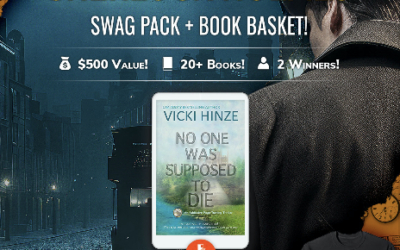Vicki Hinze © 2000-2011
Q. At my writing group meeting, an author mentioned a sell-through on her book. It sounded important, but I’ve never heard the term. What is a sell-through?
A. The short answer: sell-through is the percentage ratio of the number of units (copies of a book) produced/sold and the number of units (copies of a book) returned to the publisher for credit. Simply put, the ratio of supply and demand.
Let’s take the scenic route and walk through the process so that you have insight on how this works.
A publisher contracts with an author to publish that author’s book. After the editorial and preparation for publication process, the publisher decides on how many copies of this book to print. That’s called a “print run.” This print run is often based on the “order in.” About four months before the book’s scheduled publication date, the publisher’s sales reps take orders from booksellers, wholesale and distributor buyers. The number of orders placed for this book have a strong determining factor on the print run of a book.
Now let’s say the order in is 90,000 copies. The publisher likely will set the print run at about 100,000 copies. (This way, they have some warehouse stock to draw from if needed quickly. If they anticipate a huge word-of-mouth impact to significantly increase sales, then the publisher could elevate that print run number.)
Okay, so the book is published and shipped to the booksellers. 90,000 copies. But the publisher doesn’t expect to sell each and every copy. Tons of things influence sales–when the book comes out, what other authors have books coming out at the same time, the bookseller (or chain store’s) budget; a lot of things totally outside the author’s control.
The book is on the shelf in the bookstore. But few books have a long shelf life. Most average about six weeks, unless the book has been selling well. If it has, then it’s “modeled” at that store. Modeled means that it remains available in that store, typically on the shelf (though some use the term interchangeably with “in line,” which means that the chain of store’s warehouse keeps them available for quick shipping to individual stores).
So let’s say that the bookstore orders 12 copies of the book. This book isn’t modeled in this particular store, so at the end of the book’s “shelf life,” which the bookseller determines, that seller finds that 6 copies are still in stock and remain unsold. S/he chooses to return those unsold copies to the publisher for credit. So s/he strips off the front covers (some publishers require the entire book be returned, but since publishers pay shipping costs this isn’t typically done for paperbacks, particularly mass market) and sends the covers to the publisher. The publisher then credits that bookseller’s account for the costs of these copies. (Like when you buy and then return something from a store, only in this case, the store is the customer and the publisher is the store.) This is referred to as “returns” by the publisher.
Now, on this book in this store, 12 copies were ordered, 6 sold and 6 returned. So in this store on this book, this author’s “sell-through” is 50%. Fifty-percent of all copies bought by this store sold.
(To finish the process:)
The publisher accepts returns for a specific length of time from the booksellers. When that time elapses, then the publisher compiles all data from all parties on the book to see how it performed in the market. It compares the print run, the number of copies shipped to booksellers (ordered), the reported (by booksellers to the publisher) sales, the number of copies returned. Then does the same kind of comparative analysis as we did above for the bookseller. From this, the publisher (and author) can determine the ratio of the number of copies produced to the number of copies sold.
Most publishers don’t care to discuss “numbers” (what all this information is typically called as a whole), though in the past several years many, many of them have become extremely good and forthcoming with the information. Now before you condemn them for this, remember that they are also competitors and when they release information such as this it becomes available to their competition. That makes for challenges in strategic planning. Yet the author certainly has a right to know this information, which is why most contracts have a clause which provides the author the means to obtain that information, should it be necessary or desired.
That means is called a “Reconciliation to Print.” Typically the author can once a year request a Reconciliation to Print on a specific book (or books). This report accounts for each and every copy of the book printed and tracks its status (sold, returned, on hand (in the warehouse), advance reading copies sent to reviewers, copies used in promotion/advertising–whatever.
I realize I’ve gone into more detail here than you probably wanted, but it’s important for all of us to know how this works–before we need to know it because what has happened to us stuns us. Hope you agree, and . . .*
It’s Contest Time!
There’s a contest going on and it’s a fun one. If you love mysteries and thrillers, it’s one you’re sure to...




